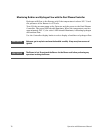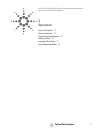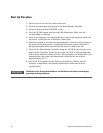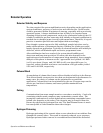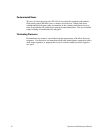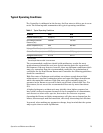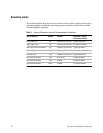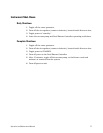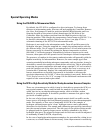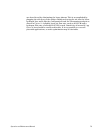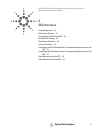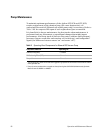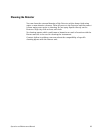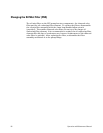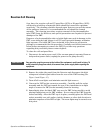78 Operation and Maintenance Manual
Special Operating Modes
Using the 255 NCD in Nitrosamine Mode
By default, the 255 NCD is configured to detect nitrogen. To change from
nitrogen to nitrosamine mode, first turn off and unplug the Controller. Remove
the cover, find jumper P6 and the positions labelled High Setpoint and Low
Setpoint located on the printed circuit board near the left front of the
Controller. Move the jumper position from the High Setpoint to the Low
Setpoint position. This changes the temperature control range to 350-500 °C to
be used for nitrosamine analysis. Refer to see Figure 9 on page 37 for a
schematic drawing of the 255 NCD in nitrosamine mode.
Hydrogen is not used in the nitrosamine mode. Turn off and disconnect the
hydrogen inlet gas. Using the supplied tee, couple the oxidant outlet with the
two Burner inlets. Use of oxygen is recommended at 5-10 mL/min because the
Burner can easily be cleaned by raising the Burner temperature to about
900-1000 °C in flowing oxygen. Alternatively, helium or argon can be used,
however, these gases will not permit in situ cleaning at elevated temperature.
The presence of catalyst in the quartz combustion tube will generally yield the
highest sensitivity for nitrosamines. However, for some sample types that
contain potentially interfering nitrogen compounds, such as nicotine, it may be
desirable to remove the catalyst to obtain better selectivity. This is achieved by
removing the quartz combustion tube and using a straight 1/16" rod or tube to
push the catalyst out of the tube (save the catalyst for reuse or recovery as it
contains 90+% platinum). Replace the combustion tube and optimize the
burner temperature as desired (in general it is desirable to increase the
pyrolysis temperature by 50-100 °C when the catalyst is not used). Refer to the
“Tube Replacement for the NCD” on page 102 for additional instruments with
regard to tube removal and replacement.
Using the SCD in High Sensitivity Mode for Nonhydrocarbon Gaseous Samples
There are circumstances in which it may be desirable to operate the SCD in a
non-typical manner. These could include the analysis of very low levels of
sulfur species in a nonhydrocarbon gas matrix, such as helium, carbon
dioxide, or even hydrogen. It should be possible to measure low ppb or high
ppt levels of sulfur species.
In the case of a hydrogen matrix, the sample matrix itself can suffice as the
lower source of hydrogen for Dual Plasma operation in a non-chromatographic
mode. For instance, a flow rate of nominally 20 SCCM of the sample, a
hydrogen calibration gas and a “clean” hydrogen source can be alternately
introduced to the Burner. The sample and calibration gas would be introduced
into the normal column connection. The side port of the splitter fitting would
be plugged and the clean hydrogen source would be plumbed to the lower
hydrogen inlet port. The upper hydrogen and air flow rates would be adjusted
to nominally 30 and 65 SCCM, respectively.
In the case of nonhydrocarbon gaseous samples, the potential for coking is not
a concern, so a Dual Plasma is not necessary. Some improvement in sensitivity



